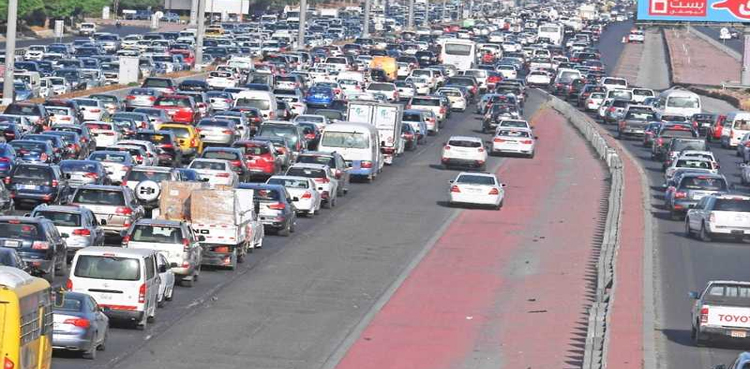
KUWAIT: The Kuwait authorities devised what they called a comprehensive plan to deal with the ongoing problem of traffic congestion throughout the country, local media reported.
The Council of Ministers recently reviewed suggestions and recommendations made by various involved authorities and tasked the Ministry of Interior with spearheading the coordination of efforts with several ministries and government agencies.
The initiative seeks to implement short, medium, and long-term solutions to ensure a sustainable improvement in traffic flow.
The ministries of finance, public works, education, and communication as well as the Kuwait Municipality, the Public Authority for Roads and Land Transport (PART), the Civil Service Commission, and the Fatwa and Legislation Department are are tasked with coordinating with each other.
The Ministry of Interior must provide a final report outlining the projects covered by the implementation plan, the steps taken by the relevant authorities, and the schedule for each operational stage of the plan by February 1, 2025.
The immediate and urgent solutions included implementing more flexible work schedules across institutions to lessen peak traffic and encouraging school children to use transport buses to reduce individual automobiles.
Important road entrances and exits would be developed along with addressing hotspots for traffic density with 39 identified development proposals, providing information on congested intersections during peak hours, and investigating experimental measures like temporarily closing Fourth Ring Road intersections controlled by signals.
The Kuwait Municipality would make sure that only high-density projects are licensed after conducting comprehensive traffic studies and obtaining approvals linked to construction and licensing requirements.
The long-term solutions included urging the Ministry of Public Works to fund and prioritise road network projects like the Fahaheel Expressway, Damascus Street, and the development of the Second, Third, and Fourth Ring Roads.
The development of the regulatory framework to oversee bus operations and other public transportation systems; expediting the metro’s rapid transit system decisions; filling in the gaps in the feasibility study; and choosing the most effective way to control population expansion are also part of the long-term solutions.

0 Comments